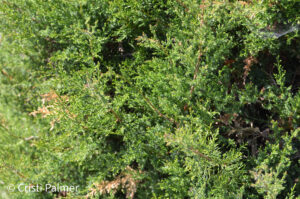
Oxadiazon has been registered in the United States since the 1970’s for uses in and around environmental horticulture plants in production nurseries and in landscapes. Between 1972 and 2021, the IR-4 Project has conducted over 724 trials on 184 plant species or genera using various oxidation formulations: Ronstar 2G, Oxadiazon 4G, Oxadiazon 5G, Ronstar 2EC, Ronstar 50WP/WSP, Ronstar 75WP, and Ronstar Flo. This report is a summary of all the available data generated through IR-4 since screenings began in 1972.
For granular formulations of oxadiazon, fifty-eight (58) plant species or genera exhibited no or minimal, transitory phytotoxicity to over the top broadcast applications; thirty of these are already in the current Ronstar 2G label. Four species had no or little transient impact with applications at the low rate tested, but impacts were observed at higher rates sufficient for plants to not be marketable. Ten species exhibited significant injury at the 1X rate. For 117 crops, more information is needed because outcomes were variable among tested locations or because only 1 or 2 trials were conducted. Forty-six of these crops are already in the current Ronstar 2G label. Most of the regulatory activity occurred prior to or during the 1990s.
For Oxadiazon EC, five plant genera had no to minimal transitory injury after over the top applications. Three crops were variable in their response either due to species, cultivar or location differences. For 19 genera/species, more information is needed since less than 3 trials were conducted; of these, four crops are already on the Ronstar WSP or Ronstar Flo labels.
With wettable powder or flowable formulations, four plant species or genera exhibited no or minimal, transitory phytotoxicity to over the top applications; all are already in the current Ronstar Flo or 50WP labels. One crop, (Sedum spurium), was injured after applications. For 32 genera/species, more information is needed either because only 1 or 2 trials were conducted or because consistent results were not achieved among the research sites. Seven of these crops are already in the current Ronstar Ronstar Flo or 50WP/50WSP labels. The remaining crops exhibited no or minimal transitory injury. Most of the regulatory activity occurred prior to or during the 1990s.
